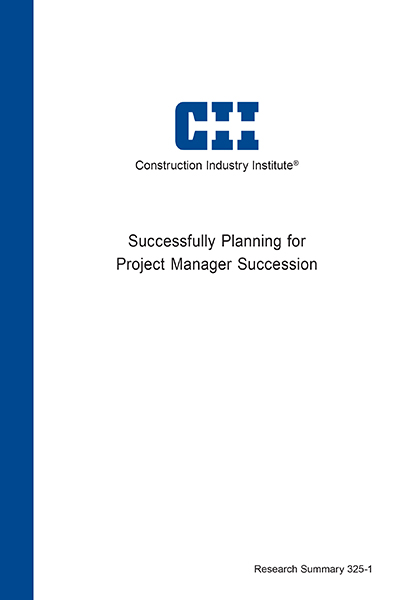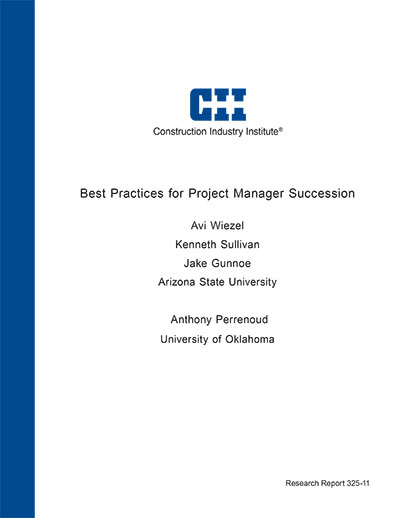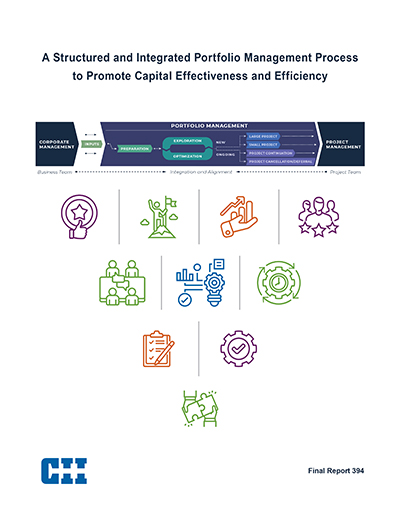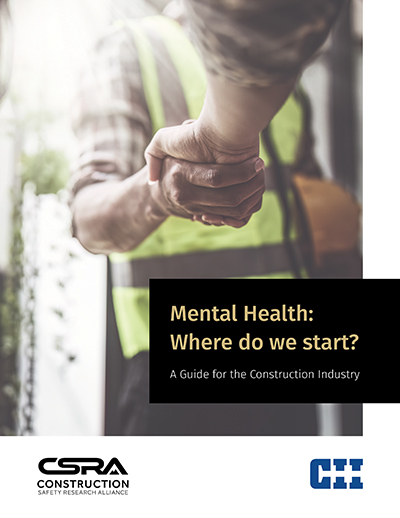
Successfully Planning for Project Manager Succession
Current research shows that, while the majority of the larger companies have a succession plan for their senior leadership, the construction industry does not have widespread, empirically tested and implemented succession models for early to mid-level employees. During normal circumstances, the promotion of mid-level employees into higher positions leaves vacancies that can create instability. In the current demographic situation, the challenges of succession are compounded by a diminishing pool of available talent.
CII tasked Research Team 325 (RT-325) with developing a general framework for succession planning for early to mid-career employees across the construction industry. As it undertook its research, the team identified the critical role of the project manager (PM) in the construction industry. RT-325 elected to focus on the PM career path as the crux of the growing succession problem. The team also found that the main challenge to implementing a succession plan was the early identification of candidates. Thus, the RT-325 research also aimed to isolate the early identifiable traits and behaviors of high-performing employees (commonly referred to as “HiPos”) with high potential to perform as PMs.
In order to better define the succession problem faced in the industry, RT-325 performed an extensive literature search and conducted an industry practices survey of 10 CII member companies. The survey showed that current succession planning procedures do not correlate with the procedures the companies perceived to be most important and did not include lower- to mid-level positions. In response to these findings, RT-325 created two tools that augment company decision-making in regard to succession planning and talent management:
- A guideline of industry succession practices as determined through literature review and by interviewing CII member companies. These practices are simple techniques that are easy to implement and understand.
- A method to early-identify traits of potential future performers. The second tool is based on a statistical analysis of the personality traits of 113 employees. The tool accounts for 47 percent of the factors that relate to potential to becoming a project manager. The analysis also revealed the following key results:
- Performance in the current position is not a good indicator of an employee’s ability to perform at the next level.
- Performance ratings are subjective and do not correlate with other traits or experience within the industry.
- Most personality traits and behaviors are inconsistent across CII member companies.
- Several key traits can help CII member companies to identify previously overlooked employees with high potential to become project managers.
The RT-325 research results identified easy-to-implement practices that allow companies to improve their succession planning methodologies systematically, specifically through what the research team came to call “the 2% extra effort.”
{^widget|(widget_displayname)WatermarkImage|(name)WatermarkImage|(image)%7e%2fCII%2fmedia%2fPublications%2f325_1Figure3.jpg%3fext%3d.jpg|(width)|(height)^}
(RS325-1, p. 7)



